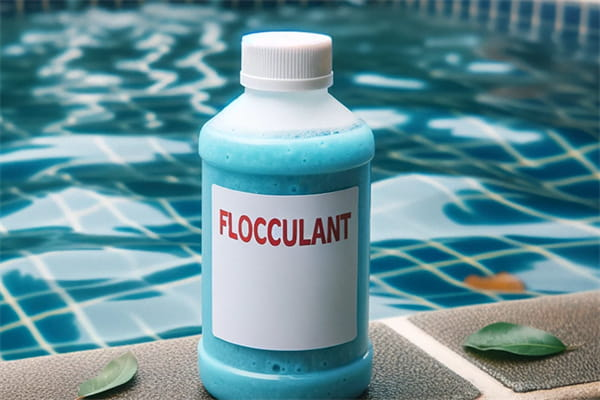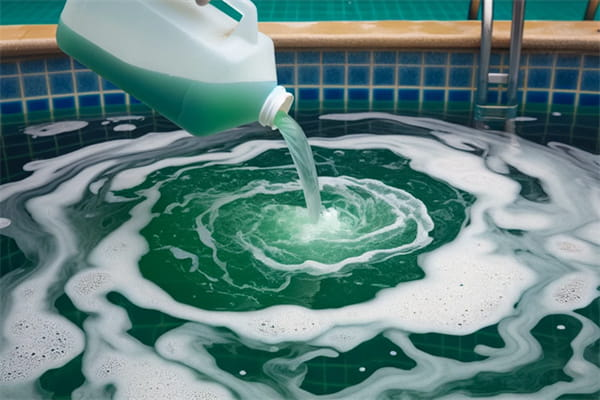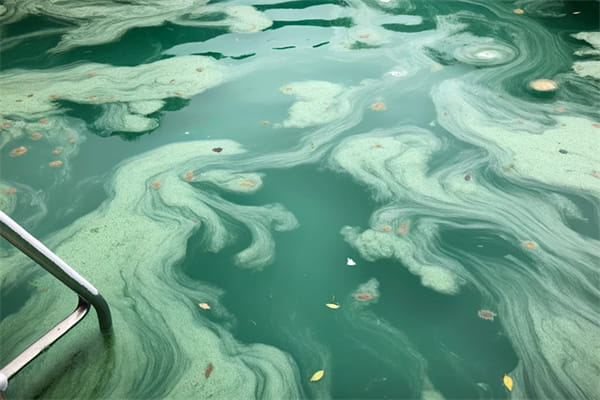If you own a swimming pool, you know that maintaining crystal-clear water can sometimes be a challenge. One effective way to tackle cloudy or murky water is by using a flocculant. But how much flocculant should you add to the pool? This is a common question among pool owners looking to achieve the best results. In this blog, we will explore the factors that influence the amount of flocculant needed, as well as provide a detailed guide on how to use it effectively.
Ⅰ. Understanding Flocculants
Flocculants are chemicals that help clear pool water by causing suspended particles to clump together and settle at the bottom of the pool, making it easier to vacuum them out. This process can significantly improve water clarity, especially after a heavy storm, an algae bloom, or other events that introduce a lot of debris into the water.

Ⅱ. Factors Influencing Flocculant Dosage
1. Pool Volume
The most critical factor in determining how much flocculant to use is the volume of your pool. This is typically measured in gallons or liters. The larger the pool, the more flocculant you will need. Calculating your pool’s volume accurately is essential for applying the correct amount of chemical.
2. Water Quality
The current state of your pool water plays a significant role in determining the flocculant dosage. If your water is slightly cloudy, you might need less flocculant. However, if the water is very murky or filled with fine debris, a higher dosage might be necessary.
3. Flocculant Concentration and Type
Different brands and types of flocculants have varying concentrations and instructions. Always read the product label for specific guidelines. Some flocculants are more concentrated and require smaller doses, while others might need larger quantities.
4. pH Levels and Chemical Balance
For a flocculant to work effectively, the pool water must be within a certain pH range, typically between 7.2 and 7.6. Ensuring your pool water is balanced with the correct pH and other chemical levels will help the flocculant work more efficiently.
5. Circulation and Filtration System
The efficiency of your pool’s circulation and filtration system can also impact the effectiveness of the flocculant. High-quality systems may distribute the flocculant more evenly and help it work faster, potentially reducing the amount needed.
Ⅲ. General Dosage Guidelines
Although the exact amount will depend on the factors mentioned above, a common guideline for flocculant dosage is around 4 to 8 ounces (115 to 230 ml) per 10,000 gallons (37,854 liters) of pool water.
Ⅳ. Step-by-Step Guide to Using Flocculant
1. Calculate Your Pool Volume
Before adding any chemicals, ensure you know the exact volume of your pool. You can use a pool volume calculator online or the following formula :
For rectangular pools:
Volume (gallons) = Length (ft)× Width (ft) ×Average Depth (ft) ×7.5
For round pools:
Volume (gallons)=Diameter (ft)²×Average Depth (ft)×5.9
2. Turn Off the Pool Pump
To allow the flocculant to work effectively, turn off your pool’s pump and filtration system. The water should be as still as possible.
3. Dilute the Flocculant
Mix the flocculant with water in a bucket according to the product instructions. This step helps distribute the chemical more evenly when you add it to the pool.
4. Add the Flocculant

Pour the diluted flocculant around the perimeter of the pool. This ensures it spreads throughout the water.
5. Allow Settling Time
Let the pool water sit undisturbed for at least 8 to 12 hours. During this time, the flocculant will bind to the particles and cause them to settle at the bottom of the pool.
6. Vacuum the Pool
After the particles have settled, carefully vacuum the bottom of the pool to remove the debris. Use the “waste” setting on your vacuum to avoid sending the debris back through the filter.
Ⅴ. Example Calculation
If your pool is 20,000 gallons and the product recommends 6 ounces per 10,000 gallons, you would need:
6 ounces×2=12 ounces
Ⅵ. Signs That You Need More Flocculant
1.Persistent Cloudiness:

If the water remains cloudy after treatment, you may need to add more flocculant.
2.Slow Settling:
If particles are not settling as expected, the dosage might need to be increased.
Ⅶ. Conclusion
Knowing how much flocculant to add to your pool is crucial for maintaining clear water. By considering factors like pool volume, water quality, and the specific product instructions, you can achieve optimal results. Remember to measure carefully, follow safety guidelines, and monitor the water after treatment to ensure your pool stays clean and enjoyable for swimming. With the right approach, flocculant can be a powerful tool in your pool maintenance arsenal.
